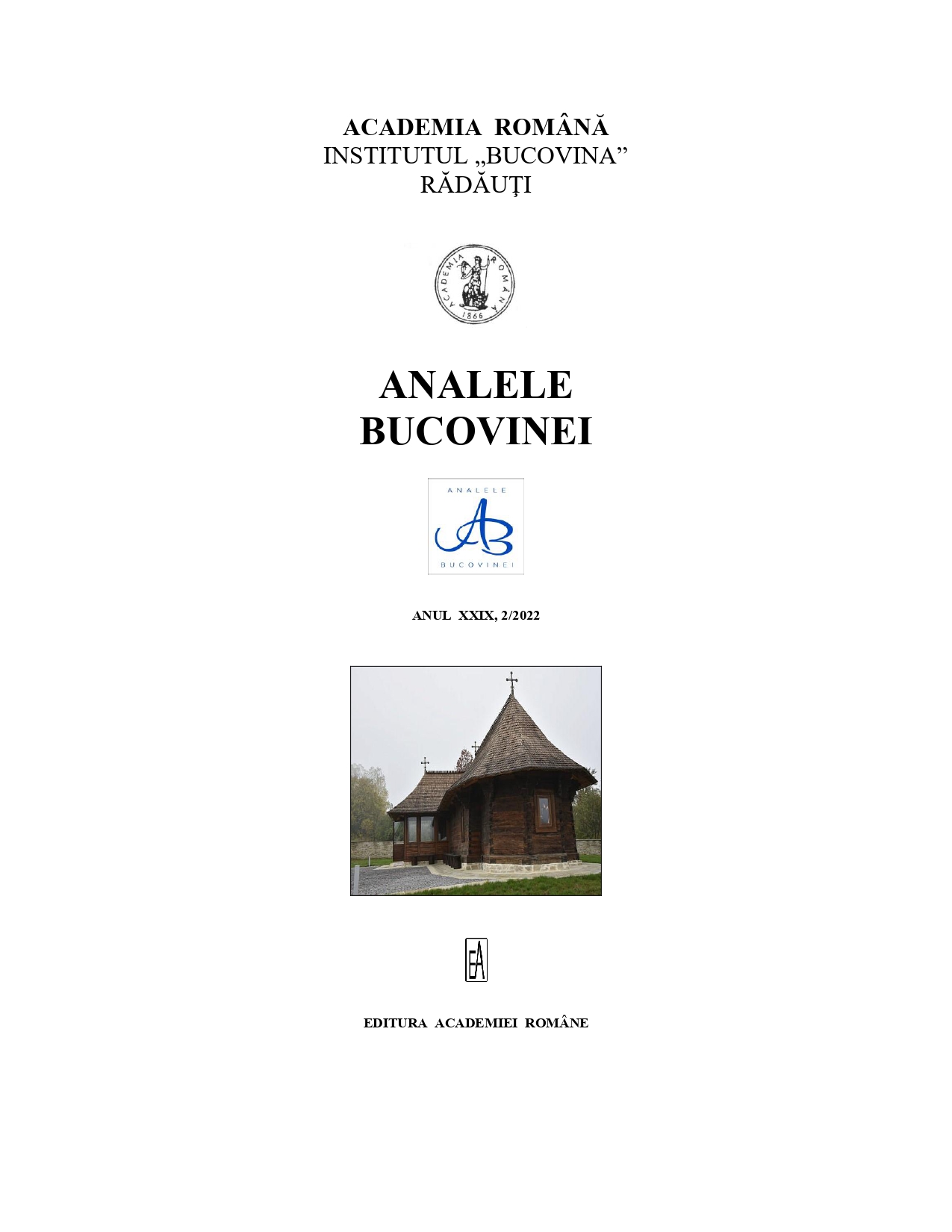NOI TENDINŢE ÎN ANALIZA SINCRONICĂ ŞI DIACRONICĂ A MINORITĂŢII GERMANE DIN BUCOVINA
New Trends in the Synchronic and Diachronic Analysis
of the German Minority in Bukovina
Author(s): Carol MohrSubject(s): Anthropology, Social Sciences, Sociology, Methodology and research technology, Nationalism Studies, Ethnic Minorities Studies, Identity of Collectives
Published by: Editura Academiei Române
Keywords: Bukovinian Germans; Bukovina Institute Augsburg; Danubiana Carpathica; imagined communities; ethnicity;
Summary/Abstract: The “Bukowina-Institut” [Bukovina Institute] in Augsburg was founded in 1988, at the initiative of Georg Simnacher, a politician who, at that time, was the president of the Schwaben Regional Council. The purpose of the institute was to research on scientific bases the multiethnic and multicultural space of Bukovina and to create efficient bridges of communication and collaboration with institutions and organizations from historical Bukovina, located on the territory of Romania and Ukraine. There was a close collabo-ration between the institute and the “Landsmannschaft der Buchenlanddeutschen”, an organization that was founded in 1949 in Munich to represent the social and cultural interests of the Bukovinian Germans in the Federal Republic of Germany. It can therefore be admitted that the institute in Augsburg had both a scientific and a political mission. It must be pointed out, however, that the political mission was fully in line with the fundamental principles and values that formed the basis for the building of the European Union.In 2003 the institute was integrated into the University of Augsburg and the fundamental directions of activity changed. The researchers newly co-opted in the Bukovina Institute were of the opinion that in the past too much importance was given to the research of the German aspects of the Bukovinaʼs culture and civilization. Then, it was considered that in the 1990s, due to the affinity and interdependence existing between the institute and the organization “Landsmannschaft der Buchenlanddeutschen”, the historical sources were not critically approached, being capitalized mainly narratives meant to give a meaning and a collective identity to the “Christian Germanophones” from Bukovina. In the present work are highlighted, on the basis of studies regarding the Bukovinian Germans, some new tendencies that manifest themselves in the current German historiography.
Journal: ANALELE BUCOVINEI
- Issue Year: 59/2022
- Issue No: 2
- Page Range: 605-617
- Page Count: 13
- Language: Romanian

